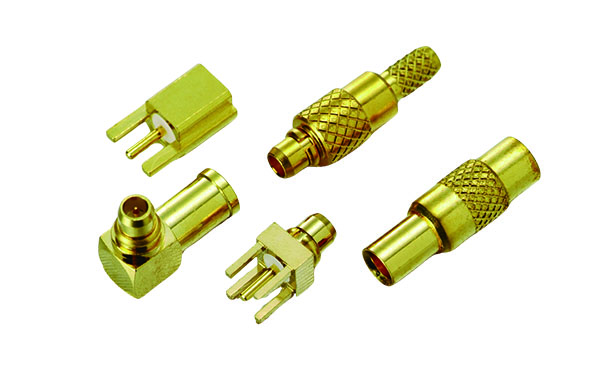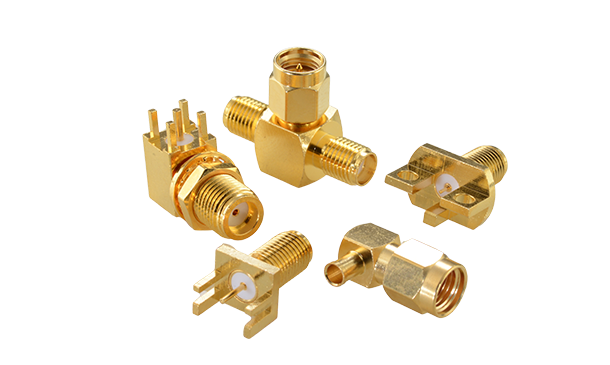- HOME
- Applications
- Blog
- Microwave Technology Principles and Applications
Microwave Technology Principles and Applications
24-03-28.jpg)
Microwave Technology has an increasingly wide range of influences, from network transmission to automated driving, military applications and satellite communications. All can see the influence of microwave technology. In this article, we will explain the core principles of microwave technology, the role it plays in technological applications, and the impact of the external environment on microwave signals. You can understand the impact of microwave technology in the development of modern technology.
〈Extended reading: What are RF/Microwave Connectors? 〉
What is Microwave Technology?
Microwave Technology occupies a specific wavelength range in the electromagnetic spectrum, which is a kind of radio frequency that covers the range of UHF, SHF, and EHF, and is widely used in the field of wireless communication, such as; cellular network, fiber optic transmission, etc.
At the same time, microwave technology is critical to the transmission of analog signals, especially in television broadcasting and radio communications, to maintain signal quality and integrity. This range of wavelengths not only ensures efficient and stable communications, but also supports a wide range of connections from urban to remote areas.
〈Extended reading: What is mmWave? Advantages, Disadvantages and Applications! 〉
Physical properties of microwaves
Wavelength and Frequency
Microwaves are part of the electromagnetic spectrum and have specific wavelengths and frequencies: the wavelength range is 1mm to 1m, and the frequency is 300MHz to 300GHz. This allows microwaves to provide extremely high speed and efficiency when transmitting data, and it is a key element in the realization of modern wireless communication technologies.
〈Extended reading: SSMP Adapters: Key Functions, Types, Advantages, and Applications〉
Band Features
The bandwidth of the microwave band is much wider than that of the low frequency radio spectrum, which means that microwave technology is able to carry more data and provide more efficient communications.
Because of its broad bandwidth, microwave technology is able to support a wide range of communication services, including voice, data, and video transmission, and can handle high density data traffic. Therefore, microwave technology is a key factor in wireless communications, satellite transmission, and all types of long-distance communications.
〈Extended reading: Get to Know Multi-Functional of BMAM RF Connectors〉
Differences between Microwaves and Millimeter Waves
Millimeter wave is a more advanced precision communication technology than microwave technology. Millimeter wave frequencies are ranged from 30 to 300 GHz and utilize extremely short wavelengths to penetrate the air, enabling fast and efficient information transfer. It is more suitable than microwave technology for high-density data transmission applications, such as 5G wireless networks, virtual reality, and the future of wireless high-speed network services.
Microwave vs. Millimeter Wave
| Microwave | Millimeter Wave (Radio Signal) |
|
|---|---|---|
| Frequency | 300 MHz to 300 GHz | 30 GHz to 300 GHz |
| Impact Level | Network communications, autonomous driving, military and satellite communications, etc. | 5G network, high-speed wireless Internet access, virtual reality, augmented reality, etc. |
| Applied Technology | Cellular mobile communications, wireless local area network (WLAN), radar system | 5G mobile communication, point-to-point wireless communication, satellite communication enhancement, internet service for future city |
Microwave Applications in Data Transfer
Microwave technology covers the transmission of signals ranging from digital data to analog sound through professionally designed antenna systems. Different microwave frequency bands fulfill a wide variety of communication needs. From terrestrial mobile communications to deep space exploration that indicates microwave technology plays a key role.
〈Extended reading: What is high frequency? High Frequency Features and Applications! 〉
Microwave Technology with Different Frequencies
| Frequency Band | Frequency | Applications |
|---|---|---|
| L-Band | 1 to 2 GHz | Mobile communication, GPS, and some radar applications. |
| S-Band | 2~4GHz | Weather radar, selected military communications and satellite communications |
| C-Band | 4~8GHz | Television broadcasting and telecommunication |
| X-Band | 8~12GHz | Military radar systems and some satellite communications |
| Ku-Band | 12~18GHz | Live Satellite Services and High Resolution Radar Systems |
| K-Band | 18~26.5GHz | High-bandwidth satellite communications and some radar applications |
| Ka Band | 26.5~40GHz | High-speed Internet services and satellite communications |
| Q-Band | 30~50GHz | Specialized in satellite communications and high-bandwidth data transmission |
| U-Band | 40~60GHz | Scientific research and experimental communication technologies |
| V-Band | 50~75GHz | Millimeter-wave communication and automotive collision avoidance radar systems |
| E-Band | 60~90GHz | High-speed wireless communications and millimeter wave applications |
| W-Band | 75~110GHz | Millimeter-wave imaging and high-bandwidth communications |
| F-Band | 90~140GHz | Deep Space Communications and Scientific Experiments |
| D-Band | 110~170GHz | Advanced Scientific Studies (Physics, Astronomy) |
Impact of the Natural Environment on Microwaves
Microwave communications are affected by changes in weather conditions and terrain. When it is raining or in a mountainous area, the signal will be poorer than normal. Through advanced prediction techniques and signal conditioning, communication efficiency can be maintained under different weather conditions. In this paragraph, we will discuss the effects of terrain and climate on microwave communications as well as propose solutions accordingly.
〈Extended reading: Mastering 2.4mm Connectors and Adapters: Applications, Specifications, and Selection Guide〉
Impact Scenario 1: Shading Effect of Mountains
The occlusion or reflection effect of mountains is a very serious challenge to the propagation of microwave signals. Especially in areas with complex terrain, the signal path can be seriously affected. Therefore, when we are located in mountainous areas, we often experience poor signal and no connection to the Internet.
Solution
The effects of mountainous terrain on microwave communications can be overcome by tuning the positioning of all antennas and setting up relay stations. Precise calculation of antenna deployment position and angle, as well as setting up repeater stations at critical locations, can effectively bypass terrain obstacles and ensure stable signal transmission.
Impact Scenario 2: Wet Weather and Rain Failure
Rain attenuation is a common phenomenon in humid weather conditions, as raindrops can absorb and scatter microwave signals, resulting in a reduction in signal strength, which in turn affects the quality and stability of communications. Since the microwave wavelength of 10 GHz is much larger than the diameter of a raindrop, it will affect the signal transmission and significantly reduce the transmission quality. In addition, rain attenuation can be caused not only by precipitation near the antenna, but also by precipitation at a distance, which requires rethinking and redesigning of satellite communications and terrestrial point-to-point links that rely on precise signal transmission.
Solution
The impact of rain fade can be minimized through techniques and strategies such as station diversity, uplink power control, variable rate coding, larger receiving antennas and hydrophobic coating. These methods help to enhance signal interference immunity, ensure communication continuity and stability, and maintain good communication performance even under extreme weather conditions.
〈Extended reading: Understanding Hermetic Sealing Technology and Hermetic Connectors in RF Applications〉
Conclusion
Microwave technology is widely used in satellite communication, mobile communication, microwave relay and other fields due to its strong penetration and short wavelength characteristics. Despite the limitations of weather, terrain, and environment, it still has a key impact on modern communication and technological advancement, and it is a key technology to promote the communication field.
Since its establishment in 2010, Huang Liang Technologies has the ability to produce high quality and stable communication parts. For microwave technology applications such as 5G, 6G, satellite, military, aerospace and defense, test and measurement, commercial and telecommunication. We are able to provide the most suitable and durable communication components. Please feel free to contact us for further information.
〈Extended reading: SMA Connectors - The Most Common RF Connectors 〉
〈Extended reading: 5 Minute Guide to Understanding the Uses and Applications of SMA Adapters 〉




